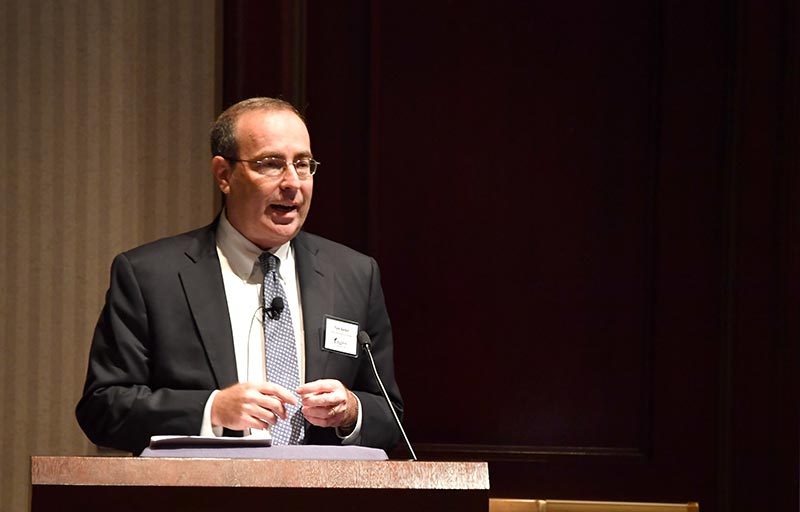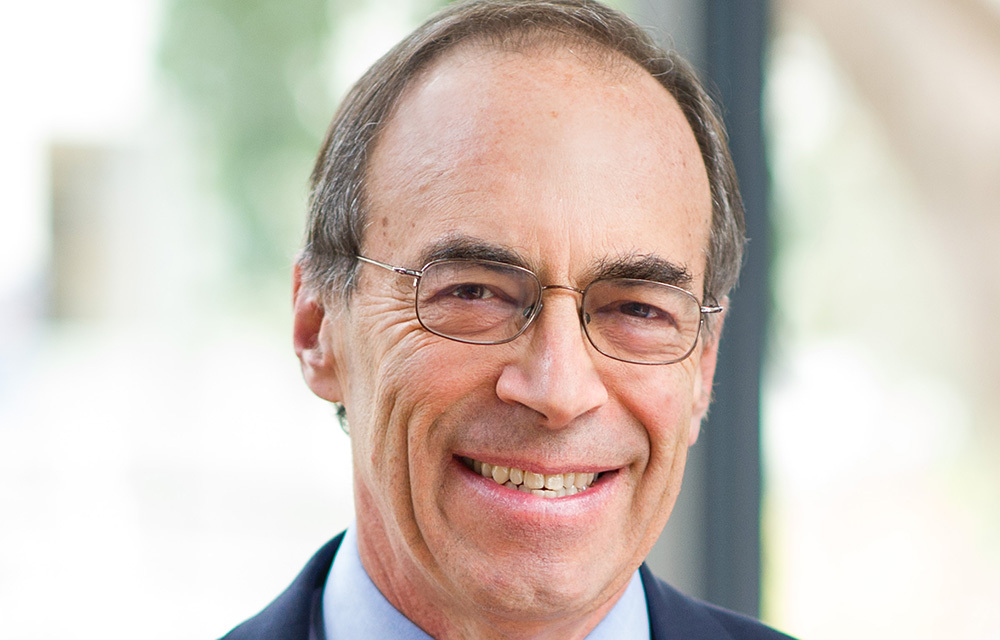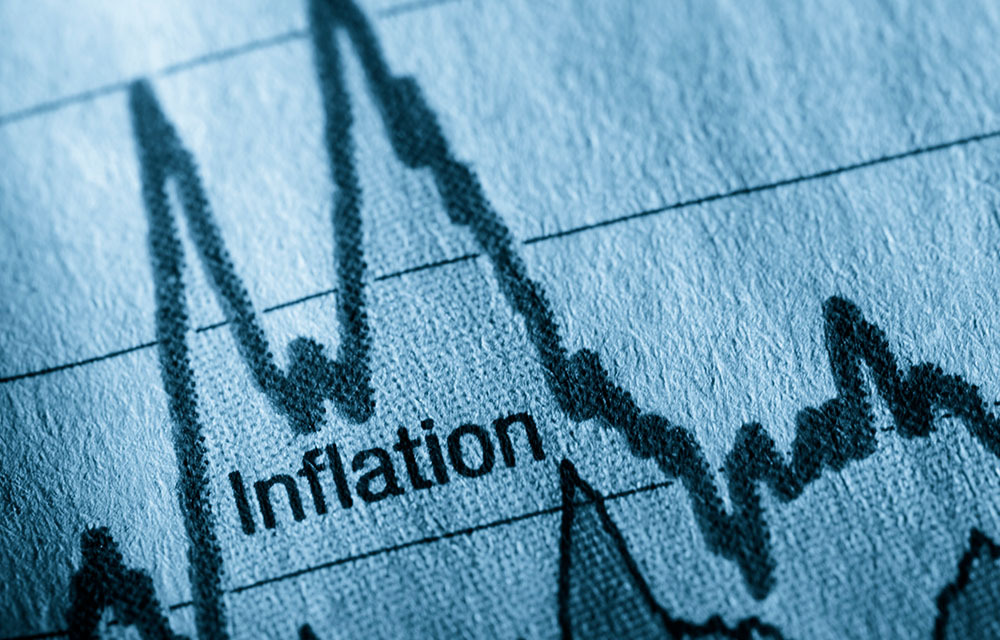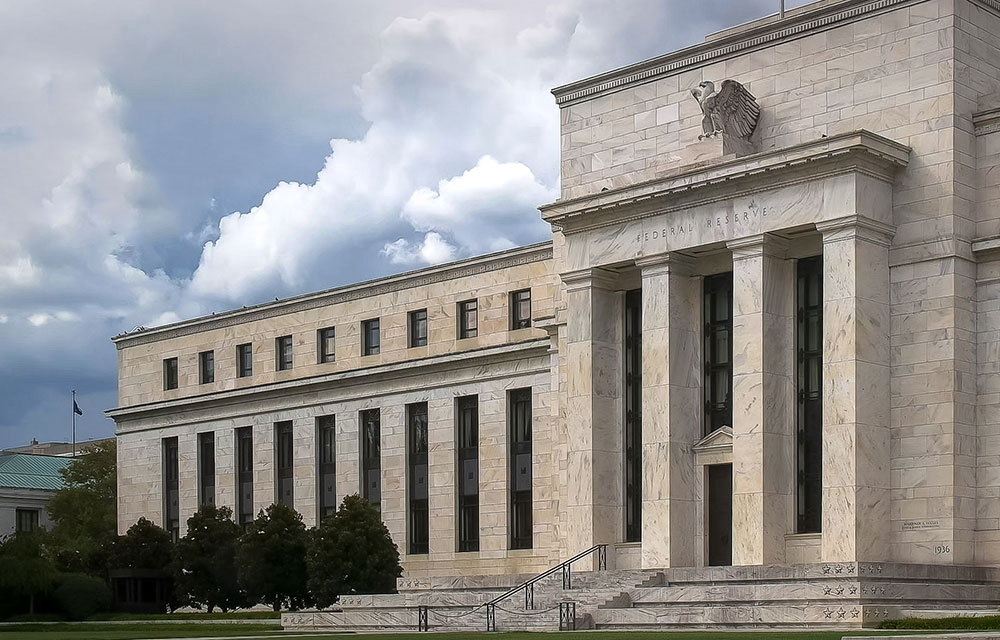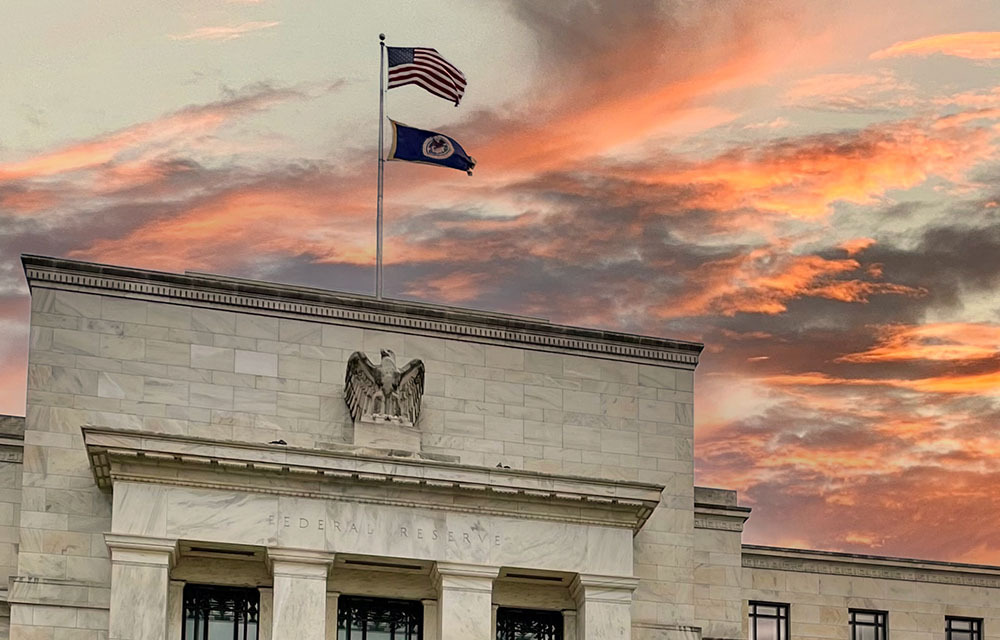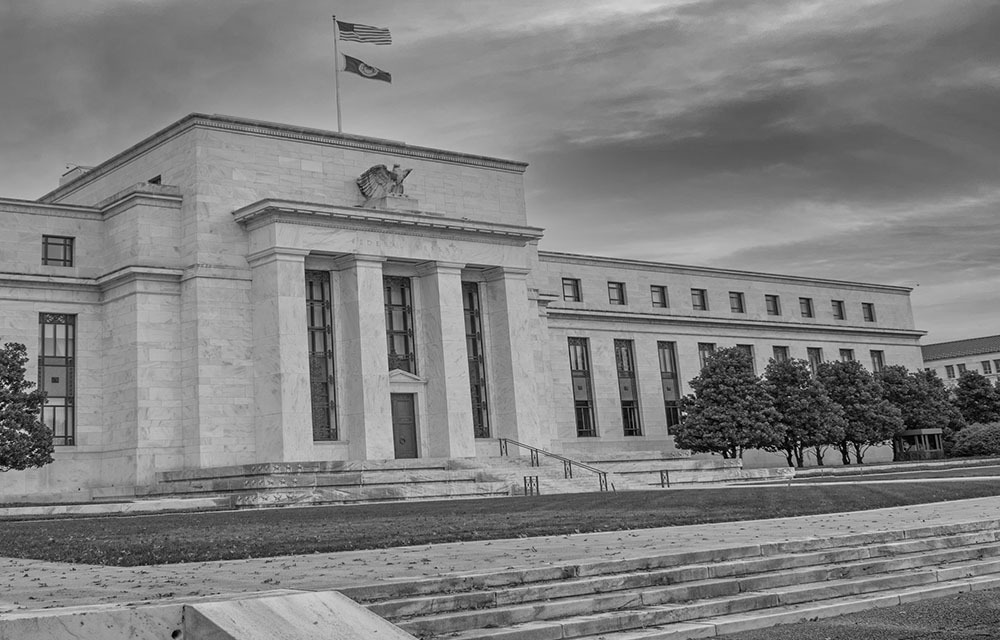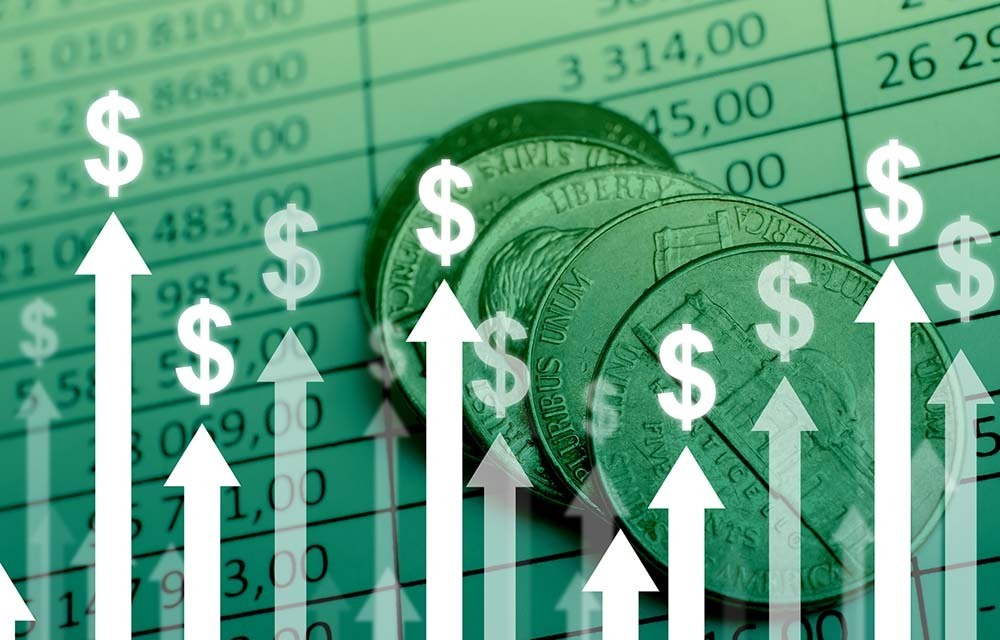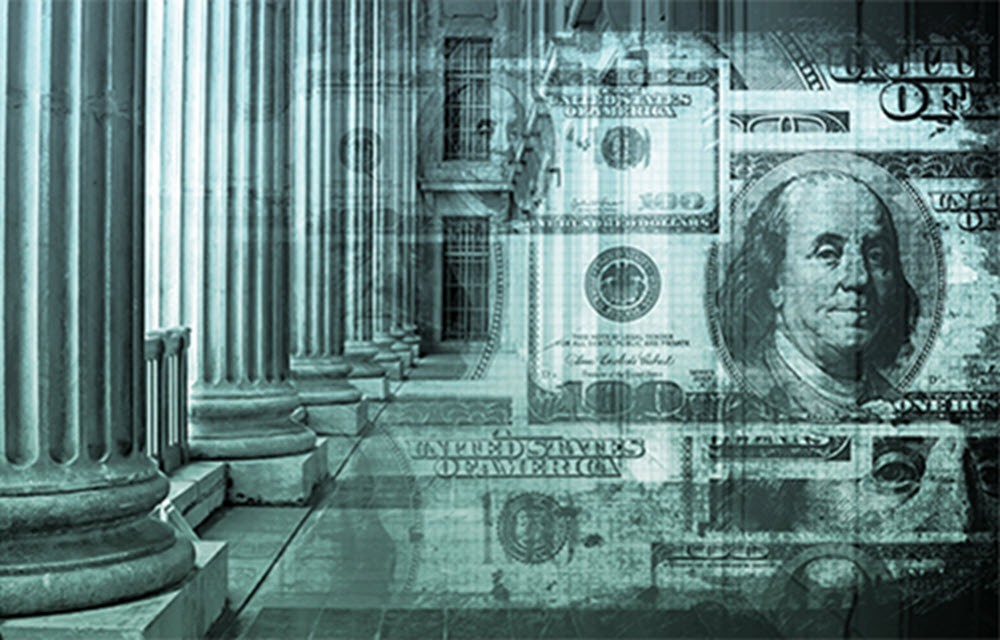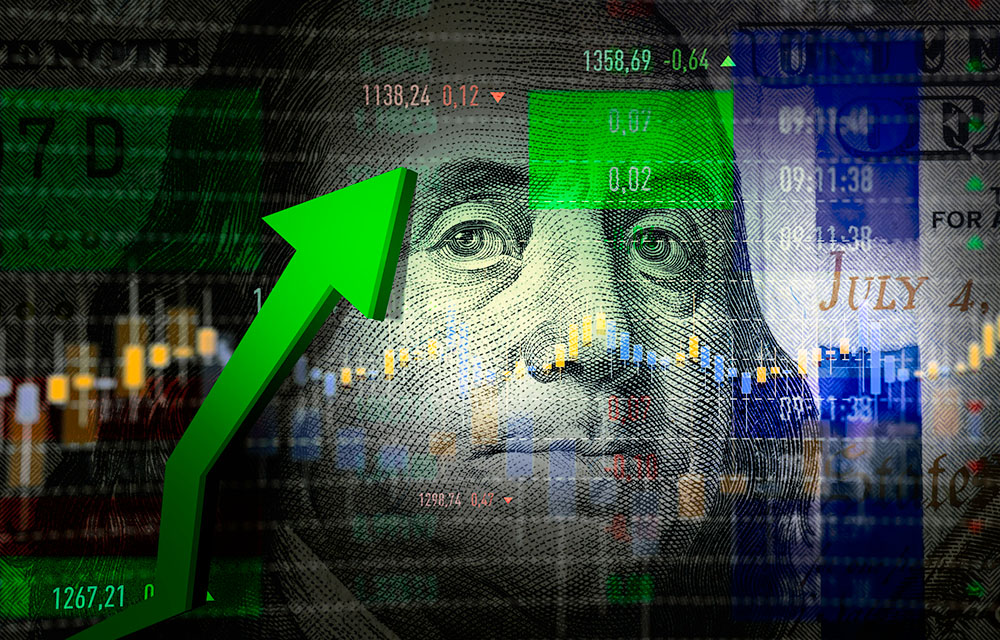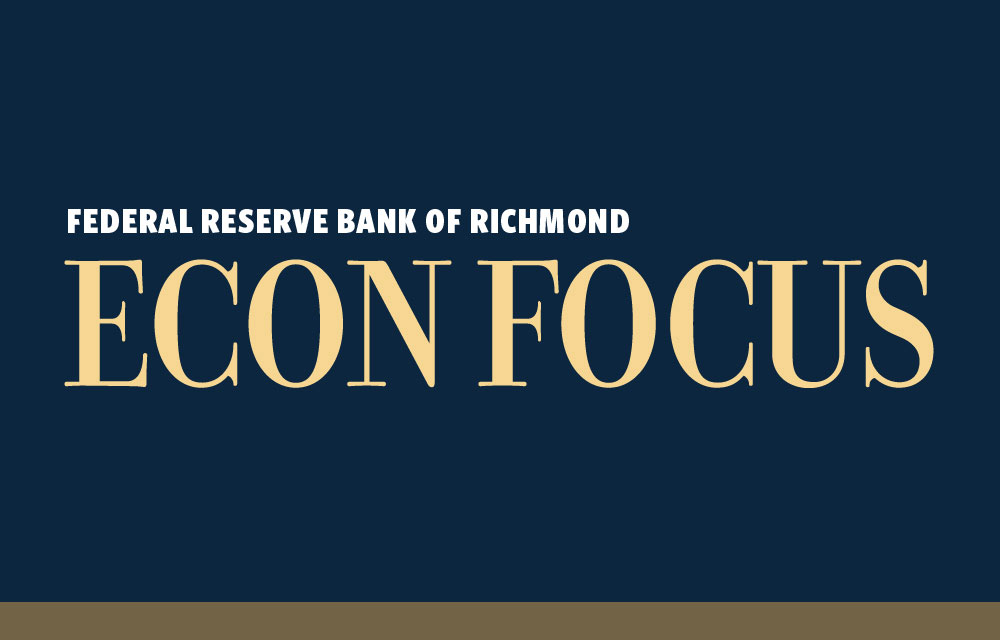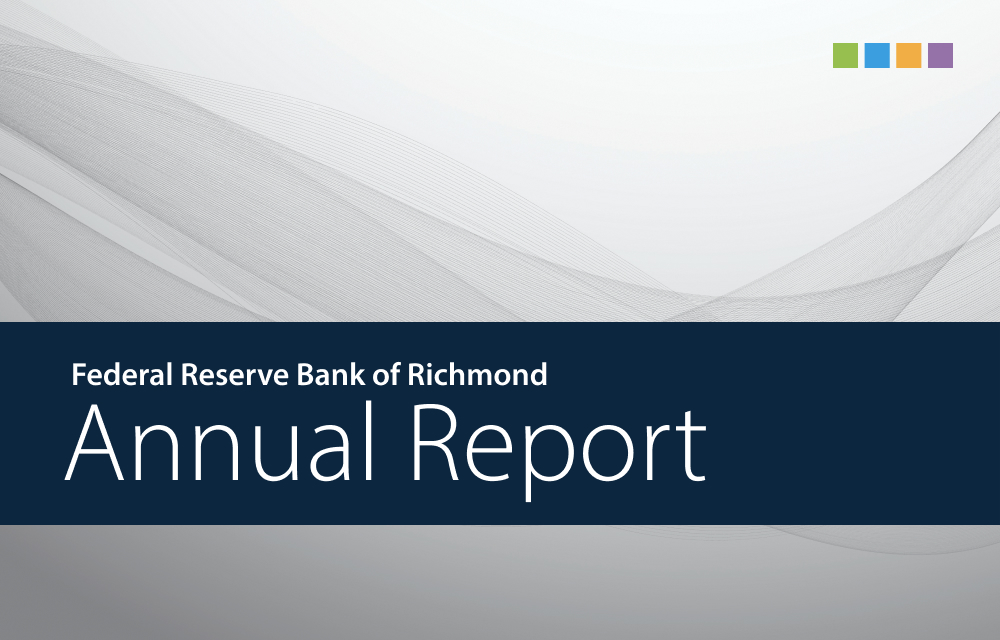While the government shutdown delayed official data releases, private sector data and outreach efforts helped Fed policymakers keep a pulse on the economy.
Inflation

Learn more about the causes, history and impact of inflation on businesses, households and the overall economy.
 Updating Results
Updating Results
A price measure derived from Richmond Fed survey data appears to be a productive way to improve any prediction of inflation.
President Tom Barkin shares his perspective on the economy and how the Richmond Fed's outreach efforts inform it.
Tom Barkin
President, Federal Reserve Bank of Richmond
With a government shutdown and significant delays in getting timely official data, what is the difference between the Richmond Fed price index and the PCE price index?
The timing of actions between the central bank and firms can have large effects on the inflation rate when monetary policy is conducted under discretion.
Willem Van Zandweghe and Alexander L. Wolman
Tom Barkin
President, Federal Reserve Bank of Richmond
Zach Edwards and Felipe Schwartzman share what they have learned about how much businesses have been passing along higher prices for their inputs — especially due to higher tariffs in 2025 — to the prices they charge their customers. They also discuss how this cost pass-through could affect overall inflation. Edwards is a research analyst and Schwartzman is a senior economist, both at the Federal Reserve Bank of Richmond.
Tom Barkin
President, Federal Reserve Bank of Richmond
President Tom Barkin discusses what he’s seeing in the data, hearing from businesses and expecting in the months to come.
Tom Barkin
President, Federal Reserve Bank of Richmond
Global interconnectedness has been present for decades, as seen by how countries' GDP growth and inflation tend to move together.
Katherine Anderson, Paul Ho and Nathan Robino
Can studying the relationship between inflation and the distribution of relative price changes provide insights into the stability of overall inflation?
Viewing the rise in inflation through a single perspective may mean missing part of the picture.
Survey data suggests firms are monitoring inflation and expect it to rise in the next year, many citing trade policy as a driving force behind the increase.
The upward trend in expected inflation has remained persistent, suggesting a greater risk to the anchoring of households' longer-term inflation expectations.
John O'Trakoun
Senior Policy Economist
The Fed learned the hard way in the 1970s that if we back off inflation too soon, it may reemerge — a price no one wants to pay.
Tom Barkin
President and Chief Executive Officer
For estimating underlying inflation, it is important to control for seasonality in volatility.
Inflation expectations are on the rise at a steeper rate than in 2018, but it's still unclear if household sentiment will have an impact on consumer spending.
John O'Trakoun
Senior Policy Economist
President Tom Barkin considers the economic outlook amid elevated uncertainty.
Tom Barkin
President, Federal Reserve Bank of Richmond
Recent survey data suggest the risk of higher inflation has increased, but there's limited evidence of a shift in longer-run inflation expectations.
John O'Trakoun
Senior Policy Economist
Renee Haltom and Sonya Waddell share what recent surveys and conversations with Fifth District contacts reveal about the expectations of businesses for their own prospects and the economy as a whole, as well as firms' concerns about inflation, labor markets, and other potential challenges in 2025. Haltom is a regional executive and vice president and Waddell is a vice president at the Federal Reserve Bank of Richmond.
University of California, Berkeley economist Alan Auerbach discusses the federal debt, the Social Security trust fund, and how Uncle Sam discourages seniors from working.
David A. Price
Will January bring further evidence of continued moderation, or could we be in for a surprise? Looking back at previous January inflation reports might indicate volatility is to be expected.
President Tom Barkin reflects on the past year and shares his outlook for the year ahead.
Tom Barkin
President, Federal Reserve Bank of Richmond
This paper addresses the heterogeneous effects of monetary policy on households of different races.
Munseob Lee, Claudia Macaluso and Felipe F. Schwartzman
The authors show that there has been a more general relationship between inflation and the distribution of relative price changes during the extended period of inflation stability in the U.S.
Andreas Hornstein, Francisco Ruge-Murcia and Alexander L. Wolman
Felipe Schwartzman explains how he and other economists define the natural rate of interest, what factors have influenced this theoretical estimate of where long-term interest rates will settle, and what it tells us about how the cost of savings and borrowing will respond as monetary policy normalizes after the COVID-19 pandemic.
When analyzing health insurance costs, both the Consumer Price Index (CPI) and Personal Consumption Expenditure (PCE) Price Index provide distinct insights into the impact of medical inflation.
John O'Trakoun
Senior Policy Economist
President Tom Barkin explores where the U.S. economy is today, how it got here and where it may be headed.
Tom Barkin
President, Federal Reserve Bank of Richmond
President Tom Barkin shares his views on the economy and the recent rate cut, and then looks to what could come next.
Tom Barkin
President, Federal Reserve Bank of Richmond
According to a multisector DSGE model, heterogeneity in shock variances across sectors is critical for matching the empirical relationship between inflation and the distribution of relative price changes.
Alexander L. Wolman and Francisco Ruge-Murcia
President Tom Barkin explores why it has been particularly challenging to predict the path of the economy over the last few years.
Tom Barkin
President, Federal Reserve Bank of Richmond
Alexander Wolman discusses the Federal Reserve's establishment of an inflation target in 2012 and how that has fit within the Fed's evolving monetary policy framework. Wolman is vice president for monetary and macroeconomic research at the Richmond Fed.
Are price increases being experienced across many categories, or is inflation mostly driven by a few stubborn categories? The PCE price index seems to suggest pricing pressure remains broad.
John O'Trakoun
Senior Policy Economist
President Tom Barkin reflects on recent data and shares his view on where the U.S. economy is headed.
Tom Barkin
President, Federal Reserve Bank of Richmond
Early 2024 inflation numbers appear high, but should such an early-year jump be expected most years?
Andreas Hornstein
(Emeritus)
It's easy to see why people might differ on the path forward for the economy — each forecaster sees the future through his or her own lens.
Tom Barkin
President and Chief Executive Officer
The FOMC established its explicit inflation target in January 2012 after a decades-long deliberation. It came in part from the Richmond Fed.
Taking into account the uncertainty of the state of the world is the hallmark of good policymaking in economics. Moreover, r* and other stars are just one of many inputs in this process.
University of California, Berkeley professor Ulrike Malmendier on the long-term effects of inflation and the remembrance of crises past.
David A. Price
President Tom Barkin explores different ways to look at recent data, and then gives his own perspective.
Tom Barkin
President, Federal Reserve Bank of Richmond
High inflation starting in 2021 has coincided with a more dispersed distribution of relative price changes.
Felipe Schwartzman and Sonya Waddell discuss their research on the relationship between inflation and firms' expectations for their costs and prices, informed by the responses to special questions added to the Richmond Fed's business surveys since 2021.
Small business performance indicators suggest that consumer demand is resilient and price pressures remain high despite inflation trending down. Measures like these can offer insights into the overall economy's state.
John O'Trakoun
Senior Policy Economist
Due to an increase in labor productivity, strong wage growth is coexisting with encouraging signs of inflation in recent readings. However, productivity growth has historically shown to be volatile.
John O'Trakoun
Senior Policy Economist
Recent data have been remarkable. President Tom Barkin shares why he still sees reasons for caution.
Tom Barkin
President, Federal Reserve Bank of Richmond
Price growth in the Fifth District is slowing, but firms expect annualized growth and price adjustments to be above pre-COVID-19 norms, suggesting that pricing uncertainty persists.
John O'Trakoun reviews different ways of tracking inflation that are intended to screen out noise and provide a more accurate forecast of price levels. He also discusses his unique approach to capturing this key economic indicator. O'Trakoun is a senior policy economist at the Federal Reserve Bank of Richmond.
Even though expectations are not paramount in how most firms set their prices, there is evidence that inflation expectations matter.
Thomas Lubik and Christian Matthes discuss how economists wrestle with measuring the natural rate of interest or r-star, why this measure is important for monetary policymakers, and how their model has evolved to better chart the path of interest rates. Lubik is a senior advisor at the Federal Reserve Bank of Richmond and Matthes is a professor of economics at Indiana University.
President Tom Barkin reflects on 2023 and shares his outlook for the year ahead.
Tom Barkin
President, Federal Reserve Bank of Richmond
Kartik Athreya, the Richmond Fed's research director, answers questions submitted by listeners about housing, the Fed's bond purchases, interest rate targeting, and artificial intelligence.
Inflation is still above the Fed's target, but the recent deviations from target have been close to what one would expect when the Fed has effectively stabilized inflation around its target.
While price-setting is challenging even in normal times, shocks during the past few years, such as the pandemic and inflation, have made it harder.
David A. Price, Tim Sablik and Matthew Wells
Upcoming Event: What do Uber and the Federal Reserve have in common? They both hire economists! Did you know that some of your favorite brands also hire economists? But what do economists actually do? Registration required.
The Michigan Consumer Sentiment index fell to 61.3 in November versus 63.8 in October, seemingly due to high price concerns.
John O'Trakoun
Senior Policy Economist
An alternative measure of profits — the price-cost markup — suggests that its contribution to inflation in the nonfinancial corporate business sector was rather small.
Andreas Hornstein
(Emeritus)
President Tom Barkin shares how communities in the Fifth District are working to move the needle on housing.
Tom Barkin
President, Federal Reserve Bank of Richmond
The evolving behavior of sectoral inflation complicates focusing on aggregate trends.
President Tom Barkin explores potential paths for the U.S. economy and their implications for monetary policy.
Tom Barkin
President, Federal Reserve Bank of Richmond
John O'Trakoun introduces the "trimmed persistence PCE," a new measure of core inflation in which component prices are weighted according to the time-varying persistence of their price changes.
John O'Trakoun
Senior Policy Economist
Richmond Fed president Tom Barkin and Federal Reserve Board Governor Michelle Bowman will lead a discussion about the lingering impact of the pandemic on the economy and the workforce. The general public is invited to listen in, via livestream, as Barkin, Bowman and several special guests explore the challenges and opportunities that exist as the region served by the Richmond Fed continues the transition to a new normal.
President Tom Barkin discusses what he is hearing on the ground from Fifth District contacts, and how it compares to recent data.
Tom Barkin
President, Federal Reserve Bank of Richmond
How does the latest monthly data affect progress versus the Fed's long-run 2 percent average inflation target?
John O'Trakoun
Senior Policy Economist
President Tom Barkin explores what’s happening in the labor market and how it could impact the path ahead.
Tom Barkin
President, Federal Reserve Bank of Richmond
The factors include intrinsic persistence, indexation, fiscal policy and unanchoring of expectations.
Out of the many components that make up the PPI, one particularly relevant item from the perspective of shoppers may be the PPI's trade indexes.
John O'Trakoun
Senior Policy Economist
In three of the last four months, inflation has been within the prediction interval based on data from the pre-pandemic era, when inflation was stable near the Fed's 2 percent target.
The current cycle appears to be unique in how inflation has moved during this most recent series of rate hikes.
Conner Mulloy, Pierre-Daniel G. Sarte and Erin Henry
Paul Ho talks about how economists model the interactions between monetary policy and the economy and the challenges of determining the economic effects of policy with precision. Ho is an economist at the Federal Reserve Bank of Richmond.
President Tom Barkin discusses what’s driving the resilient U.S. economy and where it may be headed next.
Tom Barkin
President, Federal Reserve Bank of Richmond
Andy Bauer, Renee Haltom and Matt Martin share what their business contacts have told them about regional economic conditions in the Fifth District.
President Tom Barkin explores a plausible story for how inflation returns to target.
Tom Barkin
President, Federal Reserve Bank of Richmond
Recent inflation readings continue to come in below their COVID-19 era highs, but has the persistence of inflation also come down?
John O'Trakoun
Senior Policy Economist
Do relative price changes account for the behavior of inflation in the pandemic and post-pandemic eras?
President Tom Barkin discusses recent data and events and explores potential implications for monetary policy.
Tom Barkin
President, Federal Reserve Bank of Richmond
President Tom Barkin discusses how he sees the economy, and the implications for inflation and for policy.
Tom Barkin
President, Federal Reserve Bank of Richmond
Moves toward stable inflation and maximum employment can be in conflict in the short term.
How can a plethora of individual price changes in the economy be combined into a single number that represents the overall change in the cost of living? The BLS accomplishes this with the CPI.
John O'Trakoun
Senior Policy Economist
Tom Barkin discusses the state of inflation and the monetary policy response of the Federal Reserve, as well as his outlook on the national economy. Barkin is president and CEO of the Federal Reserve Bank of Richmond.
Many models and surveys on inflation expectations exist to help answer this question. In this Economic Brief, we explore the accuracy of these measures of inflation expectations and what information can be obtained from them.
Erin Henry, Conner Mulloy and Pierre-Daniel G. Sarte
President Tom Barkin reflects on monetary policy and the economy in 2022 and shares his thoughts on what’s ahead.
Tom Barkin
President, Federal Reserve Bank of Richmond
For our first post in 2023, we pick up right where we left off: discussing inflation
John O'Trakoun
Senior Policy Economist
The past few years have seen unprecedented real economy shocks, which are particularly hard to deal with for any central bank, and so drove a lot of the inflation in the wake of the pandemic's arrival.
Kartik Athreya
Executive Vice President and Director of Research
For the first time in more than a generation, we are grappling with high, broad-based, and persistent inflation. Is there an end in sight?
Tom Barkin
President and Chief Executive Officer
While the Fed has never been a stranger to criticism, the criticism has been notable and specific during the past year. The subject: inflation.
Jason Kosakow and Santiago Pinto describe how survey data is gathered and used to assess regional and national economic conditions. Kosakow is survey director and Pinto is a senior economist and policy advisor at the Federal Reserve Bank of Richmond.
In August, President Biden signed into law a spending, revenue, and deficit reduction bill titled the Inflation Reduction Act. This bill intends to control inflation and reduce the country's deficit, but critics argue the consequences could outweigh the benefits.
This year, inflation will probably feature in some of conversations over Thanksgiving dinner. To prepare you for this onslaught, this post will take stock of how inflation has gobbled up part of the holiday budget.
John O'Trakoun
Senior Policy Economist
John O'Trakoun and Pierre-Daniel Sarte discuss the persistence of inflation over the years and what may set apart the current period of elevated prices compared to historical patterns. O'Trakoun is a senior policy economist and Sarte is a senior advisor at the Federal Reserve Bank of Richmond.
How related are wages and prices, and does the current environment mean such a relationship has changed?
John O'Trakoun and Brennan Merone
Our Fifth District business surveys indicate that firms are paying more attention to inflation as they make price- and wage-setting decisions. But businesses also expect own-price growth and inflation to moderate in the near future.
Nicholas Haltom and Sonya Ravindranath Waddell
Kartik Athreya responds to recent critiques of the Federal Reserve and its efforts to combat inflation. Athreya is executive vice president and director of research at the Federal Reserve Bank of Richmond.
A key concern about the Biden administration's debt forgiveness program is its inflationary impact. This post provides a back-of-the-envelope calculation of this impact, based on a specific view of the federal budget and how it interacts with monetary and fiscal policies.
Aubrey George and Thomas A. Lubik
Declining gasoline prices have contributed to an easing of inflation and lower inflation expectations, working in tandem with the FOMC's efforts to bring price levels down. But how hard is monetary policy tapping on the brakes of the economy?
John O'Trakoun
Senior Policy Economist
President Barkin reflects on the relationship between technological innovation, the economy and monetary policy.
Tom Barkin
President, Federal Reserve Bank of Richmond
President Tom Barkin considers the forces behind today’s high inflation and offers his outlook for the economy.
Tom Barkin
President, Federal Reserve Bank of Richmond
This theory may be obscure, even to economists, but it can have quite an impact on inflation.
The relationship between the producer price index and consumer price indexes has not always been clear.
John O'Trakoun and David Ramachandran
One can argue whether the FOMC's response to inflation has been strong enough, but financial markets and surveys suggest that the Fed retains credibility for low inflation in the long run.
Today's inflationary snarls reflect both supply shocks and policy stimulus.
John Mullin
Fed Chair Jerome Powell has stressed that monetary policy is a blunt instrument and using it to bring down inflation could entail some short-term pain. This risk, though, must be compared with outcomes that would confront the Fed and the economy were clear action not forthcoming.
Columbia University economist on inflation, capital controls, and finding research topics.
David A. Price
Following the Great Moderation — an era of low and stable inflation — the wind seems to have shifted. What does this mean for Fed policy?
Tom Barkin
President and Chief Executive Officer
Supply chain disruptions and fluctuating input costs are improving for some Fifth District firms, but the threat of a recession looms large according to August's surveys of businesses.
Inflation has hit most other advanced economies in addition to the United States. What can we learn from their experiences?
Renee Haltom offers an overview of economic conditions in Virginia, based on her recent conversations with local contacts and analysis of the data. Haltom is a vice president and regional executive at the Richmond Fed, with responsibility for engagement with businesses and communities in Virginia.
Examining how nominal income and spending behaved during the months surrounding past peaks in inflation may yield insights into the current bout of high inflation.
John O'Trakoun
Senior Policy Economist
Persistence in inflation depends on the time period studied.
Conner Mulloy, John O'Trakoun and Pierre-Daniel G. Sarte
President Tom Barkin outlines how he expects inflation to come down.
Tom Barkin
President, Federal Reserve Bank of Richmond
John O'Trakoun offers an update on where inflation stands, how it is affecting the economy, and what steps the Federal Reserve is taking to bring it down. O'Trakoun is a senior policy economist at the Richmond Fed and primary author of the Bank's Macro Minute blog.
While some measures of inflation show modest signs of improvement, trimmed mean inflation tells another story.
John O'Trakoun
Senior Policy Economist
Many assume that inflation affects all households the same. But that doesn't appear to be true.
Munseob Lee
The impact of the recent rise in prices on households and how people perceive future price increases may vary according to income, according to recent research.
Aubrey George and John O'Trakoun
Decomposing the 2012-2019 inflation shortfall, and its surge starting in 2021, we find that sectoral shocks were major contributors to the inflation deviations from target.
Francisco Ruge-Murcia and Alexander L. Wolman
As the Fed works to contain inflation, many ask whether we are headed into a recession. President Barkin shares his perspective.
Tom Barkin
President, Federal Reserve Bank of Richmond
When COVID-19 hit, it put consumers and businesses in unprecedented difficulty. Given the magnitude of the unique shock hitting the economy, the Fed acted to ensure that broader financial conditions did not further hurt consumers and businesses.
Since last summer, rising home prices have threatened to push up rent prices, adding pressure to overall inflation. How have actual rents fared and what do the most recent numbers imply for rent inflation going forward?
John O'Trakoun
Senior Policy Economist
Alex Wolman and Robert King reflect on the life and legacy of Marvin Goodfriend. Throughout his career, Goodfriend wrote a number of influential papers on monetary policy and played a key role in the development of the Richmond Fed's Research Department.
Recent reports revealed strong growth in hiring and wages for April. But is that growth enough to keep up with inflation?
John O'Trakoun
Senior Policy Economist
Inflation hasn’t been a hot topic for decades. Now that it’s back, it’s clear consumers and businesses dislike it. Richmond Fed President Tom Barkin discusses why and how the Fed is working to contain it.
Tom Barkin
President, Federal Reserve Bank of Richmond
This essay reviews Marvin Goodfriend's path to making the case that the U.S. should adopt an explicit inflation targeting system.
This essay explains why central banks have targeted a 2 percent target inflation rate instead of literal price stability.
Marvin Goodfriend drew a number of conceptual and policy implications from his analysis of inflation scares, which have become part of the central banks' approaches to monetary policy.
An examination of Marvin Goodfriend and Robert G. King's "The Incredible Volcker Disinflation" paper.
This essay reviews the Volcker and Greenspan policy accomplishments at the Fed, as well as Marvin Goodfriend's contributions during this timespan.
President Tom Barkin explores the conditions we may face once we navigate through the current inflation storm.
Tom Barkin
President, Federal Reserve Bank of Richmond
A recent analysis shows significantly higher inflation in rural areas versus urban areas, using data from nine broad census divisions. But does this difference in price levels hold true drilling down to the state level?
Aubrey George and John O'Trakoun
Alexander Wolman provides the basics on how the Fed looks at changes in price levels, reviews the distribution of recent price increases, and discusses their implications for overall inflation. Wolman is vice president for monetary and macroeconomic research at the Federal Reserve Bank of Richmond.
President Tom Barkin discusses how the Federal Reserve is working to contain inflation and reflects on the post-pandemic era economy.
Tom Barkin
President, Federal Reserve Bank of Richmond
The recent high inflation had been due to price changes in a small group of expenditures, but that changed a few months ago.
Many firms don't follow inflation closely for setting prices, but the recent high inflation may have some firms taking a closer look.
While consumers haven't been the best forecasters of the future rate of inflation, their expectations may have additional weight now because more people are paying attention to price levels.
John O'Trakoun
Senior Policy Economist
Studies suggest that short-term effects of such spending are small and long-term effects depend on an economy's sensitivity to such investment.
President Tom Barkin reflects on lessons learned last year and looks forward at what this year could look like for the U.S. economy.
Tom Barkin
President, Federal Reserve Bank of Richmond
A model takes a fresh look at the relationship between producer prices and consumer prices and can be used to make a simple forecast of inflation for 2022.
John O'Trakoun
Senior Policy Economist
For policymakers and market participants, inflation can be challenging to predict.
Andy Bauer, Matt Martin and Renee Haltom reflect on the past year, sharing what they have learned from their contacts about the national and regional economies that they follow.
Average hourly earnings continue to grow strongly. With inflation running high, however, real wage growth has been more muted. Inflation has even outpaced wage growth in a few sectors.
John O'Trakoun
Senior Policy Economist
Since 1980, survey forecasts have been modestly and consistently higher on average than the forecasts derived from a signal extraction model.
John Mullin, John O'Trakoun and Pierre-Daniel G. Sarte
The annualized PCE inflation rate over the period March through July is 6.5 percent, the highest five-month rate since November 1981.
Not everyone experiences the same inflation. What does that mean for monetary policy?
The recent acceleration in the prices people pay for housing might have more lasting implications for the path of core inflation ahead.
John O'Trakoun
Senior Policy Economist
The new language — which has been in each FOMC statement since September — represents a significant shift in the committee's thinking.
Policymakers have been using the trimmed mean PCE inflation rate to get a better sense of the overall direction of prices in the long term. But does using this metric risk missing anything that short-term price hikes might be telling us?
John O'Trakoun
Senior Policy Economist
President Tom Barkin shares his perspective on recent economic data and the outlook for inflation.
Tom Barkin
President, Federal Reserve Bank of Richmond
With a revised strategy, the Fed responds to challenges facing central banks today
The "modern monetary theory" tenet that governments can continuously print money to fund deficits ignores the fact that governments ultimately must satisfy creditors.
Michael U. Krause, Thomas A. Lubik and Karl Rhodes
Richmond Fed president Tom Barkin spoke about the outlook for inflation at a webinar hosted by the Money Marketeers of New York University.
Tom Barkin
President, Federal Reserve Bank of Richmond
The process of guiding inflation expectations higher is not likely to be easy. Indeed, the historical record suggests that making up for periods of below-target inflation will be challenging.
John A. Weinberg
(Emeritus)
Knowing about the components of the nation's money supply and its evolving role in the economy is important for monetary policy.
Mike Finnegan
This brief makes the case that research and policy should focus on four aspects of economic fluctuations: a short-term component (cycles of less than two years), a business cycle component (cycles between two and eight years), a medium-term component (cycles up to thirty-two years), and a long-term component (the trend).
Richmond Fed President Tom Barkin spoke on the national economic outlook October 3, 2018, in Charleston, West Virginia.
Tom Barkin
President, Federal Reserve Bank of Richmond
Richmond Fed President Tom Barkin spoke to community and business leaders in Roanoke, Virginia, about strategies to boost economic growth.
Tom Barkin
President, Federal Reserve Bank of Richmond
President Tom Barkin spoke at George Mason University in Fairfax, Va. on May 7, 2018.
Tom Barkin
President, Federal Reserve Bank of Richmond
FOMC meetings are set up to bring a wide range of perspectives to bear
Richmond Fed President Jeffrey M. Lacker addressed the Global Interdependence Center in Sarasota, Florida.
Jeffrey M. Lacker
President, Federal Reserve Bank of Richmond
Richmond Fed President Jeffrey Lacker addressed the Greater Richmond Chamber of Commerce.
Jeffrey M. Lacker
President, Federal Reserve Bank of Richmond
The Richmond Fed has a long tradition of concern for price stability
Does the hawk-dove distinction still matter in the modern Fed?
Disinflation is when inflation is falling. The Fed sometimes deliberately brings about disinflation, but there is a risk of it becoming outright deflation.
Renee Haltom
Vice President and Regional Executive
Richmond Fed president Jeffrey M. Lacker spoke about the national economic outlook during the Bank’s Regional Forum in Asheville, N.C.
Jeffrey M. Lacker
President, Federal Reserve Bank of Richmond
Richmond Fed President Jeffrey M. Lacker addressed business leaders during a luncheon hosted by the Rotary Club of Charlotte in Charlotte, N.C.
Jeffrey M. Lacker
President, Federal Reserve Bank of Richmond
This paper studies equilibrium pricing in a product market for an indivisible good where buyers search for sellers.
Guido Menzio and Nicholas Trachter
Richmond Fed President Jeffrey M. Lacker spoke about the economic outlook Jan. 17, 2014, in remarks to the Richmond chapter of the Risk Management Association.
Jeffrey M. Lacker
President, Federal Reserve Bank of Richmond
Richmond Fed President Jeffrey Lacker speaks with students and faculty at Franklin & Marshall College in Lancaster, Pa.
Jeffrey M. Lacker
President, Federal Reserve Bank of Richmond
Lacker Addresses Dulles Regional Chamber of Commerce, Chantilly, Va.
Jeffrey M. Lacker
President, Federal Reserve Bank of Richmond
Cover Story: The Price is Right? Has the financial crisis provided a fatal blow to the efficient market hypothesis?
Richmond Fed President Jeffrey M. Lacker spoke May 22, 2007 at the Money Marketeers of New York University in New York, N.Y.
Jeffrey M. Lacker
President, Federal Reserve Bank of Richmond
Richmond Fed President Jeffrey M. Lacker spoke April 11, 2007 at the Charlotte Economics Club in Charlotte, N.C.
Jeffrey M. Lacker
President, Federal Reserve Bank of Richmond
Richmond Fed President Jeffrey M. Lacker spoke March 9, 2007 at the U.S. Monetary Policy Forum 2007 in Washington, D.C.
Jeffrey M. Lacker
President, Federal Reserve Bank of Richmond
Richmond Fed President Jeffrey M. Lacker spoke December 1, 2006 at The Philadelphia Fed Policy Forum in Philadelphia, Pa.
Jeffrey M. Lacker
President, Federal Reserve Bank of Richmond
Cover Story: Family Portrait. Life is hard in one of Baltimore's toughest neighborhoods. But for Janice Walker, it's home.
Reviews the Bank's operations and includes the article entitled "Inflation and Unemployment: A Layperson's Guide to the Phillips Curve"
This paper investigates the ability of a region participating in a currency union to affect its inflation differential with respect to the union through fiscal policy.
It's a pleasure to be here today and to have this opportunity to comment on conducting monetary policy in a low inflation environment.
J. Alfred Broaddus
President
Reviews the Bank's operations and includes the article entitled "Sustaining Price Stability"
The paper explores the relationship between financial stability, deflation, and monetary policy. A discussion of narrow liquidity, broad liquidity, market liquidity, and financial distress provides the foundation for the analysis.
Reviews the Bank's operations and includes the article entitled "Mercantilists and Classicals: Insights from Doctrinal History"
Needless to say, it's a great pleasure for both Margaret and me to have this opportunity to return to IU, where we spent four very happy years between mid-1966 and mid-1970.
J. Alfred Broaddus
President
Reviews the Bank's operations and includes the article entitled "Monetary Policy Comes of Age: A 20th Century Odyssey"
Mr. Broaddus wishes to thank his long-time colleague, Timothy Cook, for substantial assistance in preparing the address.
J. Alfred Broaddus
President
Thank you very much for that kind introduction. It is very nice indeed to be here in the Shenandoah Valley.
J. Alfred Broaddus
President





